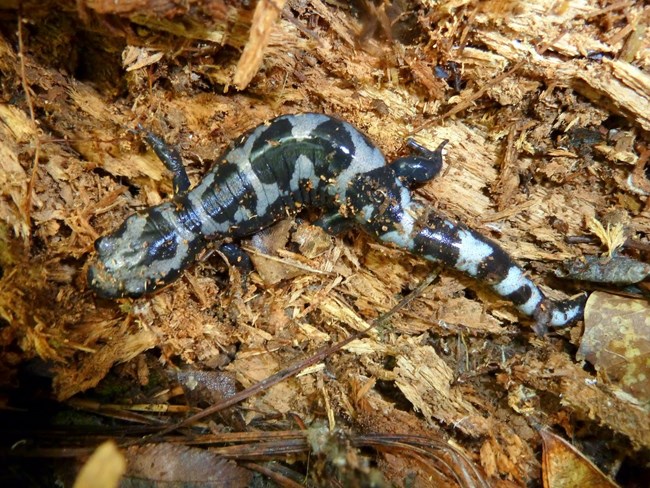This behavior helps prevent eggs from hatching too early after any unseasonal.
Marbled salamander behavior.
It has 11 12 costal grooves vertical grooves.
Disjunct populations are found in eastern missouri central illinois in northwest ohio.
This species is sexually dimorphic males tend to have white crossbands and females tend to have gray silvery crossbands.
Marbled salamander behavior tip.
Like other ambystomatids these salamanders spend most of their time underground in burrows and are infrequently seen outside of the breeding season.
The body is black with light bands of varying widths running across the back.
They can be identified by their black dark brown body including its venter with light white silvery crossbands on the dorsum.
Family ambystomatidae are a medium sized chunky salamander reaching up to 4 25 inches in length 10 8 cm as adults they have a variable number of white bars on the body.
The bands of females tend to be gray while those of males are more white.
Marbled salamanders grow to about 3 5 4 25 in 9 10 7 cm in size and are stout bodied and chubby in appearance.
Marbled salamander fact sheet.
The marbled salamander ambystoma opacum also called the banded salamander is a member of the mole salamander family.
This secretive salamander spends most of its time under rocks logs or forest debris preferring forested areas.
He didn t like being handled he just wanted to get on the ground and run.
The female has gray markings and the male has white markings.
Too wild to be a pet my marbled salamander was fun to have but he was a little bit too skittish to be locked in a tank.
The marbled salamander is three to five inches long.
Like most of the mole salamanders it is secretive spending most of its life under logs or in burrows.
The marbled salamander is a stocky boldly banded salamander.
It may also occur in open sandy woods and on rocky dry hillsides.
A small stout bodied salamander this species is easily identified by its distinct black and white patterning across its entire body.
The marbled salamander is one of many amphibians found in the bottomland hardwood forests of mississippi.
It has a black body with white or silvery gray markings.
This and many other amphibians require small fishless woodland.
It gets its name from the white or silver bands that cover the black bodies of adult salamanders.
I was worried many times that my cat would eat him.
Adults can grow to about 11 cm 4 in small compared to other members of its genus.

